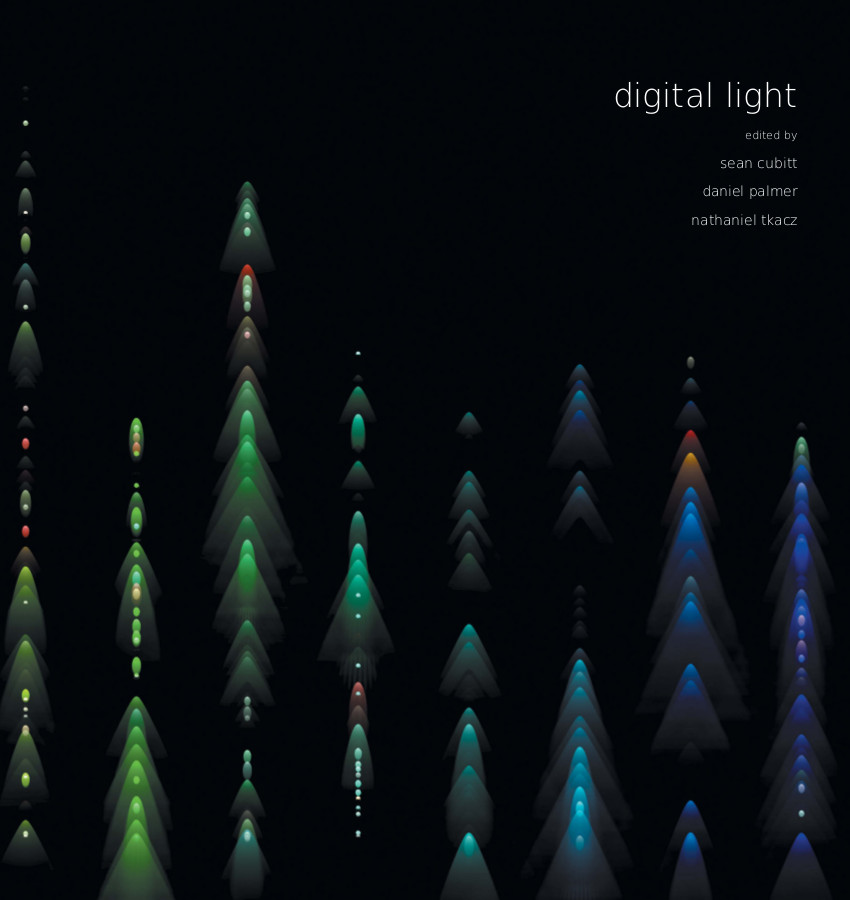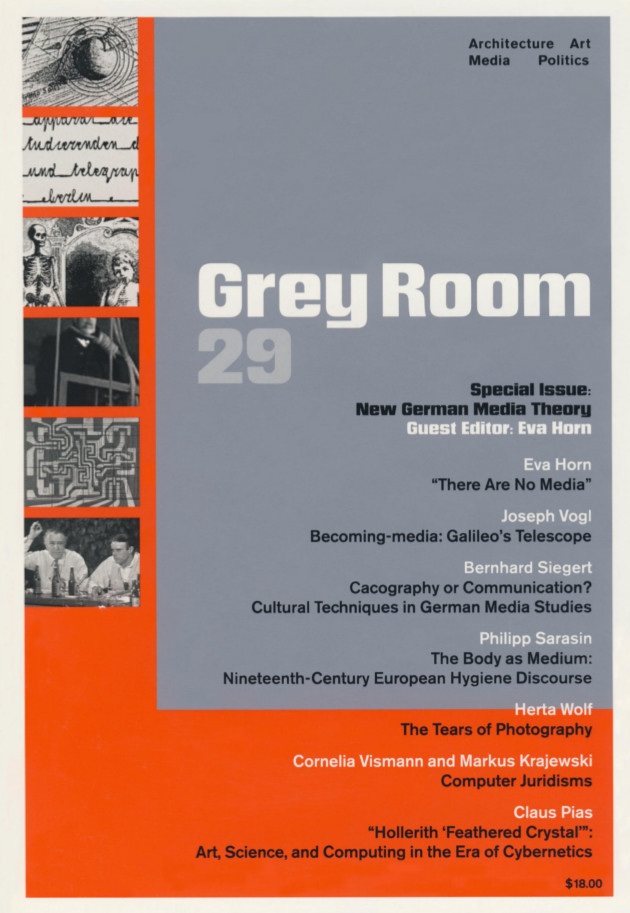Sean Cubitt, Daniel Palmer, Nathaniel Tkacz (eds.): Digital Light (2015)
Filed under book | Tags: · aesthetics, art, cinema, digital, film, image, light, optics, photography, screen, technology, vision

“Light symbolises the highest good, it enables all visual art, and today it lies at the heart of billion-dollar industries. The control of light forms the foundation of contemporary vision. Digital Light brings together artists, curators, technologists and media archaeologists to study the historical evolution of digital light-based technologies. Digital Light provides a critical account of the capacities and limitations of contemporary digital light-based technologies and techniques by tracing their genealogies and comparing them with their predecessor media. As digital light remediates multiple historical forms (photography, print, film, video, projection, paint), the collection draws from all of these histories, connecting them to the digital present and placing them in dialogue with one another.
Light is at once universal and deeply historical. The invention of mechanical media (including photography and cinematography) allied with changing print technologies (half-tone, lithography) helped structure the emerging electronic media of television and video, which in turn shaped the bitmap processing and raster display of digital visual media. Digital light is, as Stephen Jones points out in his contribution, an oxymoron: light is photons, particulate and discrete, and therefore always digital. But photons are also waveforms, subject to manipulation in myriad ways. From Fourier transforms to chip design, colour management to the translation of vector graphics into arithmetic displays, light is constantly disciplined to human purposes. In the form of fibre optics, light is now the infrastructure of all our media; in urban plazas and handheld devices, screens have become ubiquitous, and also standardised. This collection addresses how this occurred, what it means, and how artists, curators and engineers confront and challenge the constraints of increasingly normalised digital visual media.
While various art pieces and other content are considered throughout the collection, the focus is specifically on what such pieces suggest about the intersection of technique and technology. Including accounts by prominent artists and professionals, the collection emphasises the centrality of use and experimentation in the shaping of technological platforms. Indeed, a recurring theme is how techniques of previous media become technologies, inscribed in both digital software and hardware. Contributions include considerations of image-oriented software and file formats; screen technologies; projection and urban screen surfaces; histories of computer graphics, 2D and 3D image editing software, photography and cinematic art; and transformations of light-based art resulting from the distributed architectures of the internet and the logic of the database.”
Publisher Open Humanities Press, London, 2015
Fibreculture Books series
Creative Commons BY-SA 4.0 License
ISBN 1785420089, 9781785420085
224 pages
Review: Mathias Denecke (Culture Machine, 2016).
PDF, PDF, PDF (4 MB, updated on 2016-7-19)
Comment (0)Grey Room 29: New German Media Theory (2007)
Filed under journal | Tags: · aesthetics, body, code, communication, computing, cultural techniques, cybernetics, information aesthetics, law, media, media studies, media theory, mediality, technology, theory, writing

“If asked for a definition of ‘media,’ the answer given by the authors included in this volume would likely be ‘Es gibt keine Medien’–‘There are no media.’ In 1993, Friedrich Kittler published the essay ‘There Is No Software.’ Three years later, Bernhard Siegert attacked one of the fetishes of the burgeoning German media studies of the 1990s by declaring that ‘There are no mass media.’ Such a dismissal of some of the core concepts of media studies–including any fixed concept of ‘media’ itself may well be the signature of the type of ‘new media theory’ presented by the modest collection of essays in this volume.” (from the Introduction)
With contributions by Eva Horn, Joseph Vogl, Bernhard Siegert, Philipp Sarasin, Herta Wolf, Cornelia Vismann and Markus Krajewski, and Claus Pias.
Edited by Eva Horn
Publisher MIT Press, Fall 2007
ISSN 1526-3819
133 pages
Es gibt kein PDF (removed on 2014-11-15 upon request of the publisher)
Comment (0)Zeitschrift für Medienwissenschaft 8: Medienästhetik (2013) [German]
Filed under journal | Tags: · aesthetics, art, cybernetics, media, media theory, networks, philosophy of technology, technology

Der Schwerpunkt «Medienästhetik» findet seinen Ausgangspunkt in einer Beobachtung Félix Guattaris, die in ihrer ganzen Dringlichkeit vermutlich erst heute einzusehen ist: Die Produktion von Subjektivität, die mit der allgemeinen Kybernetisierung der Lebensform einhergeht, wurde von Guattari als eine Frage der Ästhetik pointiert. Die medientechnologische Situation, die hinter dieser Neubewertung des Ästhetischen steckt, hat sich in den letzten zwanzig Jahren durch den Eintritt in eine Prozesskultur, wie sie die multiskalaren, netzwerkbasierten, environmentalen Medien des 21. Jahrhunderts bringen, ebenso verschärft wie ausdifferenziert.
Mit Beiträge von Félix Guattari, Luciana Parsi, Erich Hörl, Geert Lovink, Olga Goriunova, Jens Schröter, Yuk Hui, Shintaro Miyazaki, Anke Heelemann, Petra Löffler, Olivier Simard, Ute Holl, Nacim Ghanbari, Sebastian Haunss, Beate Ochsner, Isabell Otto, Tristan Thielmann, Ralf Junkerjürgen, Juliane Rebentisch, Michaela Ott, Jan Distelmeyer, Oliver Leistert, Theo Röhle, Maja Figge, Daniela Wentz und Sebastian Gießmann.
Guest edited by Erich Hörl and Mark B. N. Hansen
Publisher Diaphanes, Zürich, 2013
ISBN 9783037342404
ISSN 1869-1722
Open Access
216 pages
PDF (single PDF)
PDF (PDF articles)

